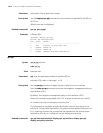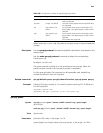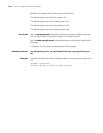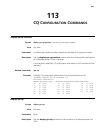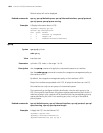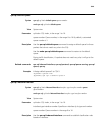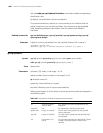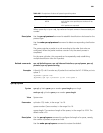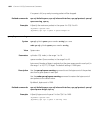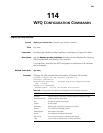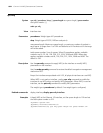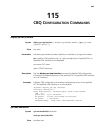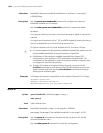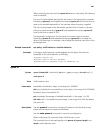
1820 CHAPTER 113: CQ CONFIGURATION COMMANDS
Use the undo qos cql inbound-interface command to delete corresponding
classification rules.
By default, no classification rules are configured.
This command matches a packet to a rule according to the interface that the
packet comes from. For the same cql-index, this command can be repeatedly
used, establishing different classification rules for packets from different
interfaces.
Related commands: qos cql default-queue, qos cql protocol, qos cql queue serving, qos cql
queue queue-length
Examples # Specify a rule to put packets from the interface Ethernet 5/0 in queue 3.
<Sysname> system-view
[Sysname] qos cql 5 inbound-interface ethernet 5/0 queue 3
qos cql protocol
Syntax qos cql cql-index protocol ip queue-key key-value queue queue-number
undo qos cql cql-index protocol ip [ queue-key key-value ]
View System view
Parameters cql-index: CQL index, in the range 1 to 16.
queue-number: Queue number, in the range 0 to 16.
ip: Protocol name is IP.
queue-key: Associated key of a queue.
key-value: Matching rule of a queue associated key.
When protocol-name is IP, the values of queue-key and key-value are displayed in
the following table:
Table 484 Descriptions of values of queue-key and key-value
queue-key key-value Description
acl access-list-number,
2000 to 3999
All IP packets that match the specified ACL are
enqueued.
fragments Null All fragmented IP packets are enqueued.
greater-than Length, 0 to 65535 Any link layer frame greater than the specified
value is enqueued.
less-than Length, 0 to 65535 Link layer frames greater than the specified value
are enqueued.
tcp Port number, 0 to
65535
Any IP packet whose source or destination TCP port
number is the specified port number will be
classified.



